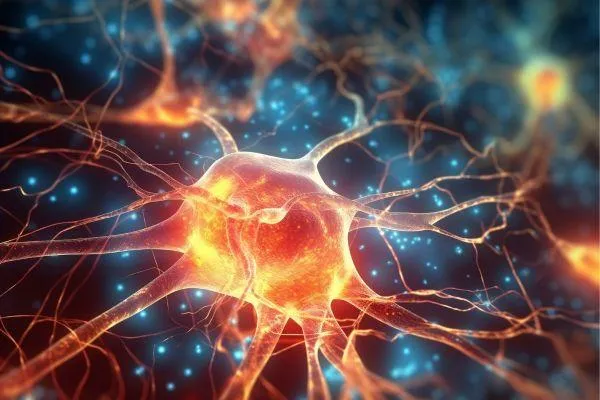Free Digital Marketing Tips
Latest Posts

The Psychology of Digital Marketing: Understanding Consumer Behavior
In the ever-evolving landscape of digital marketing, understanding the underlying psychology of consumer behavior is not just beneficial—it's essential. The digital era has empowered consumers, giving them unlimited access to information and choices. Hence, for marketers, diving into the cognitive processes that drive consumers' decision-making can offer a significant competitive edge. Here’s how the intricacies of human psychology interplay with digital marketing strategies to influence consumer behavior.
1. The Principle of Reciprocity
The principle of reciprocity is simple: when someone does something for us, we naturally want to return the favor. In digital marketing, this could translate into offering something valuable for free—like an insightful ebook, a webinar, or a sample product. This not only builds trust but also subtly encourages consumers to engage with your brand, increasing the likelihood of conversion.
2. The Power of Social Proof
Humans are inherently social beings and often look to others when making decisions. This phenomenon, known as social proof, is a powerful tool in digital marketing. Showcasing customer testimonials, user reviews, and case studies on your website or social media can significantly influence potential customers, as positive experiences resonate and foster trust.
3. The Scarcity Effect
The fear of missing out (FOMO) is real and can be a potent motivator in consumer behavior. Limited-time offers or exclusive deals create a sense of urgency and scarcity, prompting users to act quickly to avoid missing out. Highlighting the exclusivity and time-sensitive nature of offers can lead to increased engagement and conversions.
4. The Anchoring Effect
The first piece of information we receive about something (the 'anchor') tends to influence our decision-making thereafter. In pricing strategies, for instance, showing the original price alongside the discounted price can anchor the perceived value of the deal, making the offer seem more attractive.
5. The Paradox of Choice
While having options is good, too many choices can be overwhelming, leading to decision paralysis. Simplifying consumers' choices can enhance the user experience and guide them towards the desired action. Clear, concise, and well-categorized content on your website or app can help consumers navigate their choices more efficiently.
6. The Color Psychology
Colors evoke emotions and can significantly impact consumer behavior. For example, blue often instills a sense of trust and reliability, while yellow can grab attention and evoke a sense of happiness. Understanding color psychology can be particularly useful in website design, branding, and creating call-to-action buttons.
At its core, digital marketing is about connecting with people in the right place at the right time. By understanding and leveraging the psychological principles that influence consumer behavior, marketers can create more engaging, intuitive, and compelling digital marketing strategies. Remember, the ultimate goal is to provide value, build relationships, and offer solutions that resonate with the consumer's needs and desires. In the digital realm, where the human element is often masked by screens, integrating psychology into your marketing strategy can reveal the human behind the digital—creating not just customers, but brand advocates.
Social Media

The Psychology of Digital Marketing: Understanding Consumer Behavior
In the ever-evolving landscape of digital marketing, understanding the underlying psychology of consumer behavior is not just beneficial—it's essential. The digital era has empowered consumers, giving them unlimited access to information and choices. Hence, for marketers, diving into the cognitive processes that drive consumers' decision-making can offer a significant competitive edge. Here’s how the intricacies of human psychology interplay with digital marketing strategies to influence consumer behavior.
1. The Principle of Reciprocity
The principle of reciprocity is simple: when someone does something for us, we naturally want to return the favor. In digital marketing, this could translate into offering something valuable for free—like an insightful ebook, a webinar, or a sample product. This not only builds trust but also subtly encourages consumers to engage with your brand, increasing the likelihood of conversion.
2. The Power of Social Proof
Humans are inherently social beings and often look to others when making decisions. This phenomenon, known as social proof, is a powerful tool in digital marketing. Showcasing customer testimonials, user reviews, and case studies on your website or social media can significantly influence potential customers, as positive experiences resonate and foster trust.
3. The Scarcity Effect
The fear of missing out (FOMO) is real and can be a potent motivator in consumer behavior. Limited-time offers or exclusive deals create a sense of urgency and scarcity, prompting users to act quickly to avoid missing out. Highlighting the exclusivity and time-sensitive nature of offers can lead to increased engagement and conversions.
4. The Anchoring Effect
The first piece of information we receive about something (the 'anchor') tends to influence our decision-making thereafter. In pricing strategies, for instance, showing the original price alongside the discounted price can anchor the perceived value of the deal, making the offer seem more attractive.
5. The Paradox of Choice
While having options is good, too many choices can be overwhelming, leading to decision paralysis. Simplifying consumers' choices can enhance the user experience and guide them towards the desired action. Clear, concise, and well-categorized content on your website or app can help consumers navigate their choices more efficiently.
6. The Color Psychology
Colors evoke emotions and can significantly impact consumer behavior. For example, blue often instills a sense of trust and reliability, while yellow can grab attention and evoke a sense of happiness. Understanding color psychology can be particularly useful in website design, branding, and creating call-to-action buttons.
At its core, digital marketing is about connecting with people in the right place at the right time. By understanding and leveraging the psychological principles that influence consumer behavior, marketers can create more engaging, intuitive, and compelling digital marketing strategies. Remember, the ultimate goal is to provide value, build relationships, and offer solutions that resonate with the consumer's needs and desires. In the digital realm, where the human element is often masked by screens, integrating psychology into your marketing strategy can reveal the human behind the digital—creating not just customers, but brand advocates.
Website Design

The Psychology of Digital Marketing: Understanding Consumer Behavior
In the ever-evolving landscape of digital marketing, understanding the underlying psychology of consumer behavior is not just beneficial—it's essential. The digital era has empowered consumers, giving them unlimited access to information and choices. Hence, for marketers, diving into the cognitive processes that drive consumers' decision-making can offer a significant competitive edge. Here’s how the intricacies of human psychology interplay with digital marketing strategies to influence consumer behavior.
1. The Principle of Reciprocity
The principle of reciprocity is simple: when someone does something for us, we naturally want to return the favor. In digital marketing, this could translate into offering something valuable for free—like an insightful ebook, a webinar, or a sample product. This not only builds trust but also subtly encourages consumers to engage with your brand, increasing the likelihood of conversion.
2. The Power of Social Proof
Humans are inherently social beings and often look to others when making decisions. This phenomenon, known as social proof, is a powerful tool in digital marketing. Showcasing customer testimonials, user reviews, and case studies on your website or social media can significantly influence potential customers, as positive experiences resonate and foster trust.
3. The Scarcity Effect
The fear of missing out (FOMO) is real and can be a potent motivator in consumer behavior. Limited-time offers or exclusive deals create a sense of urgency and scarcity, prompting users to act quickly to avoid missing out. Highlighting the exclusivity and time-sensitive nature of offers can lead to increased engagement and conversions.
4. The Anchoring Effect
The first piece of information we receive about something (the 'anchor') tends to influence our decision-making thereafter. In pricing strategies, for instance, showing the original price alongside the discounted price can anchor the perceived value of the deal, making the offer seem more attractive.
5. The Paradox of Choice
While having options is good, too many choices can be overwhelming, leading to decision paralysis. Simplifying consumers' choices can enhance the user experience and guide them towards the desired action. Clear, concise, and well-categorized content on your website or app can help consumers navigate their choices more efficiently.
6. The Color Psychology
Colors evoke emotions and can significantly impact consumer behavior. For example, blue often instills a sense of trust and reliability, while yellow can grab attention and evoke a sense of happiness. Understanding color psychology can be particularly useful in website design, branding, and creating call-to-action buttons.
At its core, digital marketing is about connecting with people in the right place at the right time. By understanding and leveraging the psychological principles that influence consumer behavior, marketers can create more engaging, intuitive, and compelling digital marketing strategies. Remember, the ultimate goal is to provide value, build relationships, and offer solutions that resonate with the consumer's needs and desires. In the digital realm, where the human element is often masked by screens, integrating psychology into your marketing strategy can reveal the human behind the digital—creating not just customers, but brand advocates.

